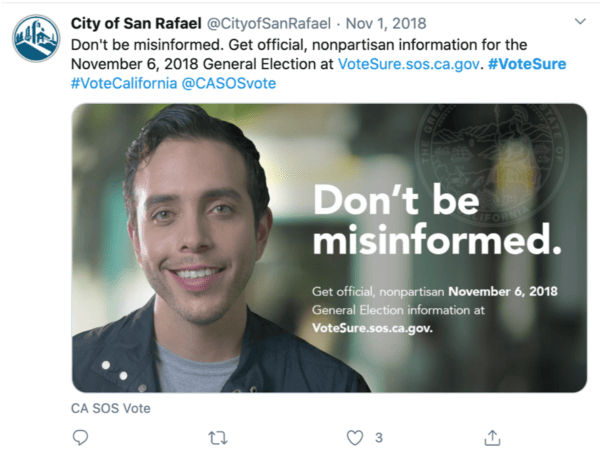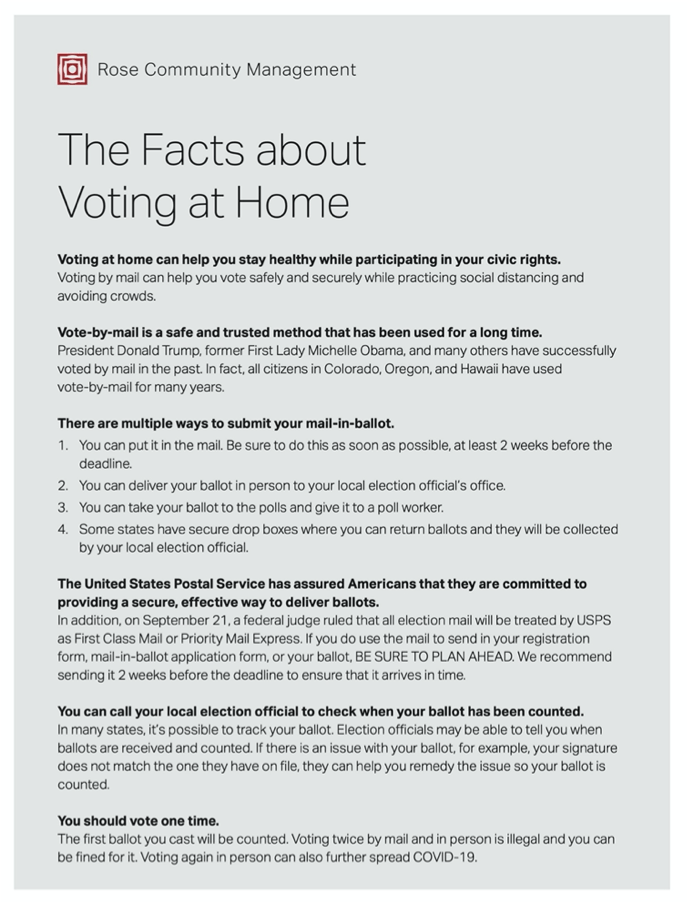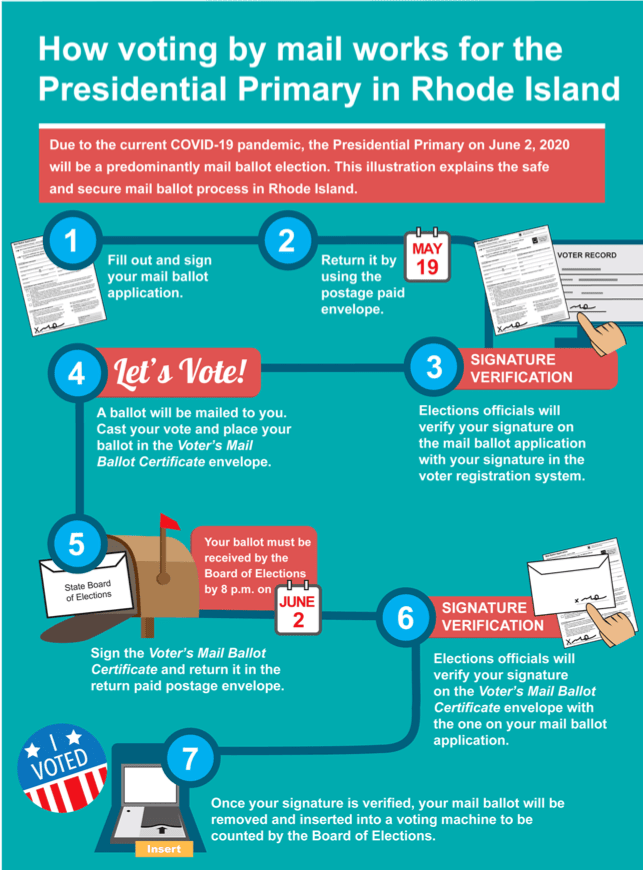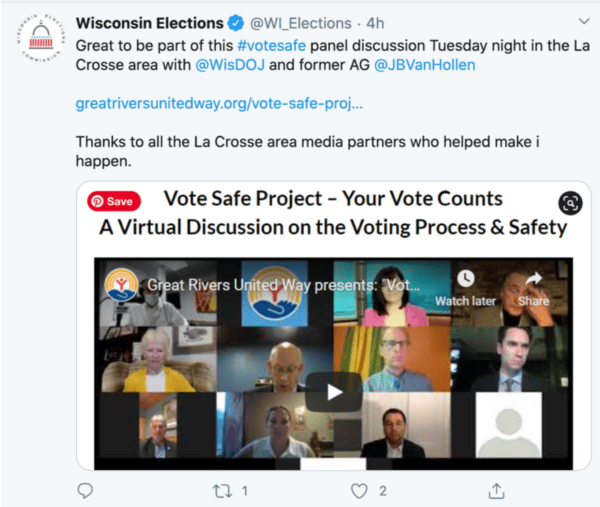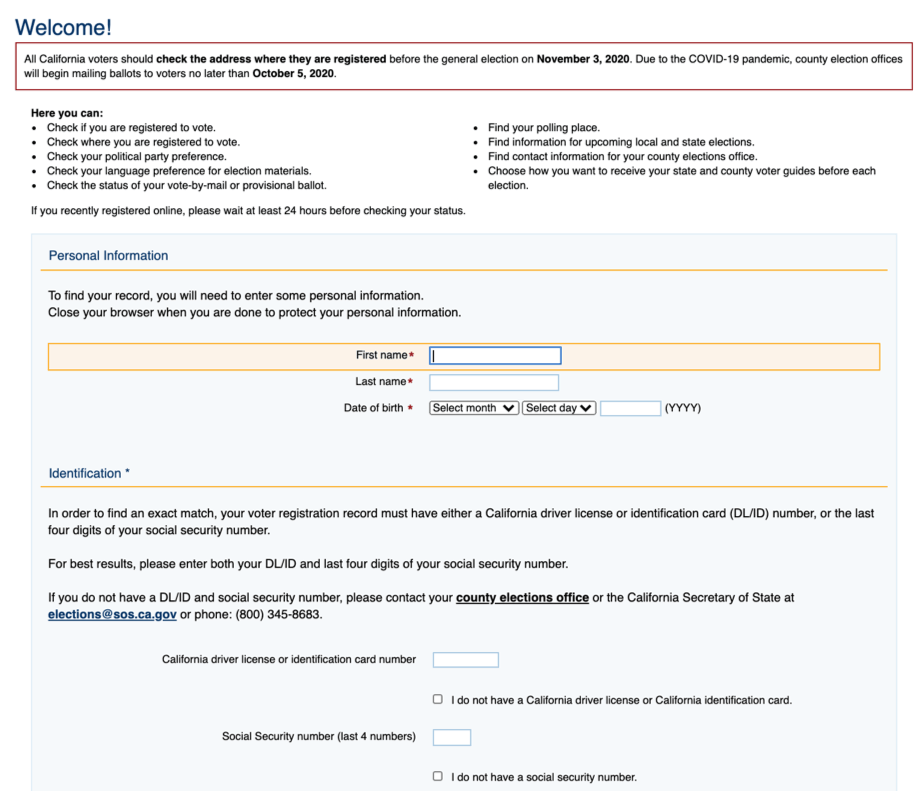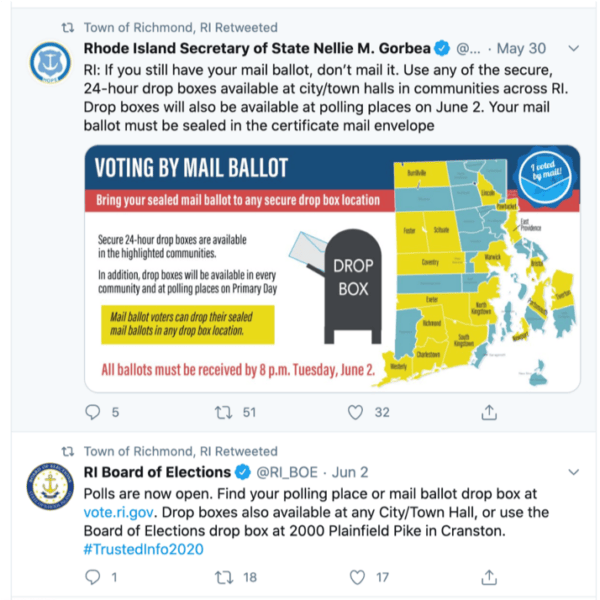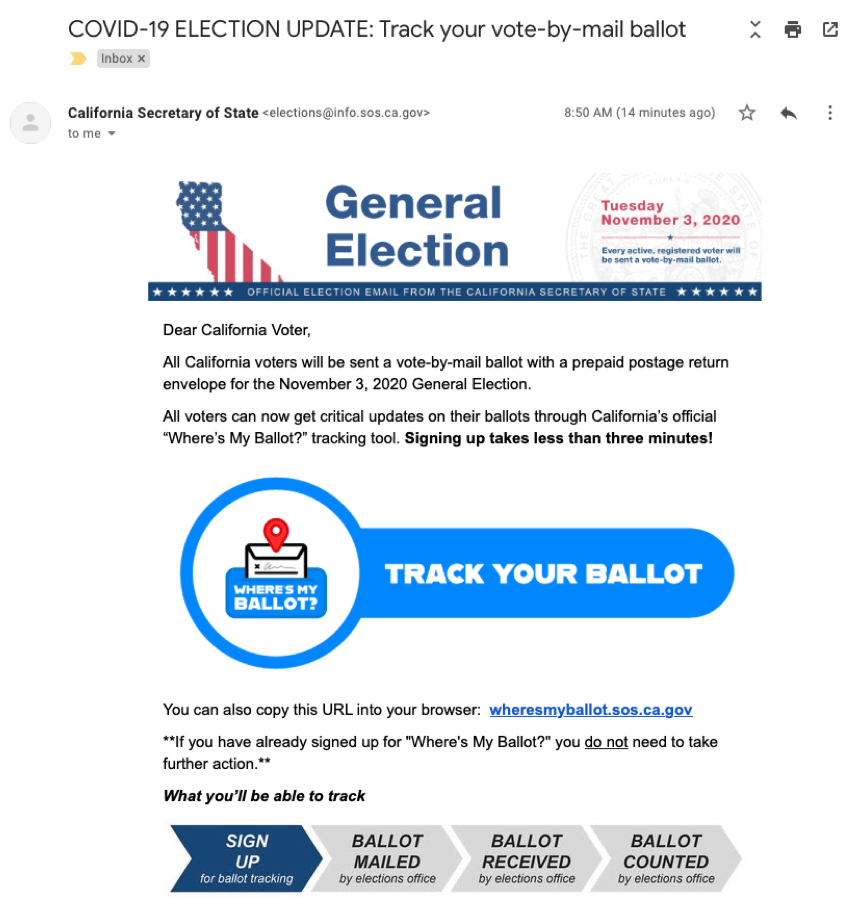HIGHLIGHTS
- Combatting misinformation is crucial to protecting our democracy
- Messaging should be carefully crafted to dispel falsehoods without reinforcing myths
- These checklists are a guide for officials and partners to respond to misinformation
Behavioral strategies for combatting misinformation.
Rampant misinformation about election processes threaten both voter turnout and the integrity of our democracy. Misinformation spreads more quickly than facts, so responsive messaging needs to be targeted and coordinated between election officials, public and private partners. Stakeholders should focus on inoculating voters from misinformation before false beliefs take hold. This report provides evidence-based strategies informed by behavioral science research to counter misinformation and cut through the noise.
You can also download the checklists as a pdf.
1. Provide warnings about categories of false claims to inoculate voters against them and empower the public to report false claims. Equip voters with the facts to inoculate them against misinformation by building factual narratives that prevent misconceptions from taking
1. Provide warnings about categories of false claims to inoculate voters against them and empower the public to report false claims.
Equip voters with the facts to inoculate them against misinformation by building factual narratives that prevent misconceptions from taking root. Avoid general warnings about misinformation as emerging research suggests this leads to distrust of all sources. Instead, warn voters about categories of false claims, explain why malicious actors are motivated to spread them. Research suggests most people don’t want to spread misinformation, so equip them with tools to identify false claims.
DO
Share category-specific warnings and concrete advice:
- Go beyond the warning: Focus on specific angles of misinformation and explain how malicious actors benefit from making false claims.
- Help with identification: Identify the clues that suggest a source may be sharing misleading or false information.
- Channels for reporting: Enlist the public to report emerging misinformation that requires proactive response.
- Contact sources of misinformation: Privately contact accounts posting misinformation to understand their motivation and share the facts.
DON’T
Give general warnings or engage sources:
- Don’t post general warnings about the existence misinformation without advice on how to identify it.
- Don’t engage publicly with the sources of misinformation, this just draws attention to the message.
EXAMPLES OF GOOD MESSAGING
Channels for reporting: This links to a resource page that allows people to report misinformation in two clicks. Take it a step further by giving readers an explicit call to action to report misinformation to election officials and add a link to the reporting page.
Go beyond the warning: This tweet suggests a go-to source for trusted information about the general election.
2. Never repeat or reiterate misinformation, even to debunk it.
When misinformation circulates, it may be tempting to address a specific falsehood to allay voters’ fears. But this risks exposing more people to the false claim. A body of evidence in psychology suggests that people are more likely to believe, and also share, false claims after hearing them once (the sense of familiarity is often mistaken for validation). See this Fact Sheet on Vote by Mail from the National Vote At Home Institute as an example of debunking myths without repeating them.
DO
Push out simple narratives that focus on facts:
- Frame around facts: Build a narrative that contradicts false claims without reiterating the misinformation.
- Address multiple claims: Use simple, general narratives that inoculate voters from multiple false claims at once, when possible.
- Use positive statements: Explain how things work to help voters build a cohesive mental model of voting systems that inoculates them from myths.
DON’T
Repeat misinformation:
- Don’t repeat falsehoods. Repetition increases exposure and the chance people will believe the myth.
- Don’t frame messaging around myths. Build a narrative of truth.
- Don’t use negative statements (e.g. Election Day is not Nov. 4). Research shows people tend to misremember these statements as positive.
EXAMPLES OF GOOD MESSAGING
Frame around facts: The one-pager combats multiple myths about voting by mail by building the readers’ understanding of truths.
Address root claims: The facts get at the heart of myths about voting by mail that manifest in multiple ways (e.g. that vote-by-mail ballots are not secure or will not be delivered).
Use positive statements: Facts that tell voters what to know or do (e.g. “You should vote one time”) are more likely to be remembered accurately than negative statements. This fact implies that voters shouldn’t follow advice to vote twice, without repeating that myth.
1. Repeatedly explain how to vote through different methods to familiarize voters with their options and build trust. Navigating unfamiliar voting processes is similar to the experience of being a new voter, and this election the majority of voters are
1. Repeatedly explain how to vote through different methods to familiarize voters with their options and build trust.
Navigating unfamiliar voting processes is similar to the experience of being a new voter, and this election the majority of voters are “new”. New systems can be confusing and feel less trustworthy. Proactive transparency builds trust in unfamiliar voting methods by addressing concerns directly. Repeatedly describe different voting methods, highlight security features, and emphasize that these systems, while new to some, have been used for years.
DO
Repeatedly explain how different voting options work:
- Keep it simple: When explaining systems, highlight actions that voters need to take and features that keep the election secure.
- Show voting systems: Post videos and visuals on social media to show how voting by mail works (e.g. how to send a vote-by-mail ballot or the counting process).
- Get bi-partisan support: Bi-partisan endorsements from local politicians legitimize the state’s vote-by-mail system.
- Repeat the message: Use multiple channels to get messages out. Messages heard multiple times are perceived as more trustworthy.
DON’T
Use complex messages or rely on a single channel:
- Don’t focus on unnecessary details. Instead, prioritize the parts of the process that matter to voters.
- Don’t only use one channel, such as social media or mail. Use many different channels.
EXAMPLES OF GOOD MESSAGING
Show voting systems: This simple one-pager shows how voting by mail works from ballots arriving to being counted.
Keep it simple: This visual clearly highlights the actions that need to be taken by voters.
Keep it simple: Focus on steps in the process that build voters’ confidence in elections, such as vote-by-mail ballots being counted by election officials.
Get bi-partisan support: This panel shows bi-partisan support from local politicians, including the current Democratic and former Republican Attorneys General, which confers legitimacy to voting processes.
Repeat the message: By cross-posting this video on multiple channels of social media, the message is spread further to reach more voters.
2. Make processes easier and help voters overcome unavoidable hassles.
Simple instructions can help voters successfully navigate new systems. Uncertainty and small hassles can be outsized barriers to voting and leave voters with negative feelings towards the election. It’s best to eliminate hassles and make systems as easy as possible. But when that’s not possible, transparent communication about why a process is set up in a certain way can engender trust.
DO
Reduce hassles and provide explanations when they are unavoidable:
- Offer tips: Advise voters on how to get through complex processes. Election officials can add call out boxes directly in to printed materials and digital systems.
- Be transparent: Explain the reason for redundancies or hassles when they are unavoidable. Transparency builds trust with users.
- Remove barriers: Eliminate bureaucratic hassles or redundancies altogether where possible.
DON’T
Place unnecessary barriers that deter voters:
- Don’t assume that lack of motivation is the reason voters aren’t able to overcome hassles. Think first, “what may be standing in their way?”
- Don’t ask for redundant or personal information without explanation for why it’s being requested.
EXAMPLES OF GOOD MESSAGING
Remove barriers: Figuring out where to go to find information about voting can be a challenge and this page makes it easy by creating a one-stop shop for voters to complete many transactions related to voting.
Be transparent: This page explains the reason for hassles that may give voters pause, such as requests for sensitive personal information.
Offer tips: Help voters to navigate complex processes with tips to overcome barriers. This page even provides a hotline for voters to seek further help.
1. Coordinate stakeholders to disseminate synchronized messaging. Information is perceived as more trustworthy the more times it is heard. Therefore, it’s important to use all communication channels at your disposal to share truthful information because, unfortunately, misinformation naturally spreads more quickly
1. Coordinate stakeholders to disseminate synchronized messaging.
Information is perceived as more trustworthy the more times it is heard. Therefore, it’s important to use all communication channels at your disposal to share truthful information because, unfortunately, misinformation naturally spreads more quickly than facts. Synchronize messaging from government officials, businesses, and non-profits so voters hear the same facts repeatedly without getting conflicting information.
DO
Repeatedly share information that presents an accurate narrative about voting:
- Amplify: Engage non-governmental partners with large followings to disseminate information (e.g. businesses, community groups, churches, etc.)
- Be consistent: Share consistently-worded messages. Repeatedly hearing the same facts increases legitimacy of the messaging and source.
- Coordinate: Hold regular meetings for key stakeholders to align on messaging about the election and civic processes.
DON’T
Use differing or seemingly conflicting messages:
- Don’t share messaging with slightly different wording across different channels.
- Don’t forget to coordinate with partners within and outside of government channels.
EXAMPLES OF GOOD MESSAGING
Amplify: The town of Richmond shared important election information to ensure the message reached a larger audience. While Secretaries of State may reach a decent number of voters, amplification from other government accounts, businesses, or non-profits can help spread to right information.
Consistency: Retweeting serves as an endorsement from a trusted source for the original message, while ensuring that voters are receiving consistent messaging from multiple sources.
2. Increase transparency to confer trust in the legitimacy of the election and the results.
Leverage tools such as social media and ballot tracking to pull back the curtain on opaque voting systems. Transparency helps build trust in new voting processes and the election as a whole. Share videos showing key voting procedures (e.g., how ballots are counted), and bring in the media and community leaders to tour in-person polling places and ballot processing facilities so they can share out their experiences with the broader public.
DO
Pull back the curtain to show voters how and why the voting processes work:
- Updates: Election officials should share updates about the election’s status, such as the number of ballots received and when to expect results.
- Personal testimonies: Election officials should let journalists and local leaders try out systems and share the experience with their audiences.
- Ballot tracking: Send emails and mailers inviting voters to track their vote-by-mail ballot online. Election officials should make sign up easy and accessible.
- Highlight “Counted”: In all visuals showing the vote-by-mail ballot’s journey, include “counted” as the final step.
DON’T
Closely hold information that may be valuable to voters:
- Don’t wait until Election Day to show voters how key processes work, such as counting ballots.
- Don’t make it difficult to find or sign up for ballot tracking. Integrate sign-up into other processes, such as registration.
- Don’t only share information about voting processes on official channels. Engage partners to disseminate crucial information.
EXAMPLES OF GOOD MESSAGING
Personal testimonies: This local news video pulls back the curtain of a local ballot processing locations and shows how ballots are counted. The local news anchor interviews employees at the facility to explain the details of the ballot counting process.
Ballot tracking: This email from the California Secretary of State inviting voters to sign up to track their vote-by-mail ballot online was sent to all voters who opted to receive updates about the election by email. This simple email led to 250,000 new sign-ups for ballot tracking.
Highlight “Counted”: Set the expectation that ballots will be counted before election results are salient or even contentious. This visual highlights that vote-by-mail ballots are always counted.

